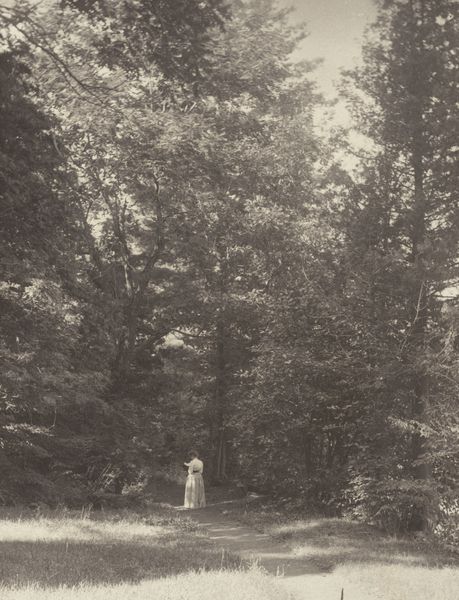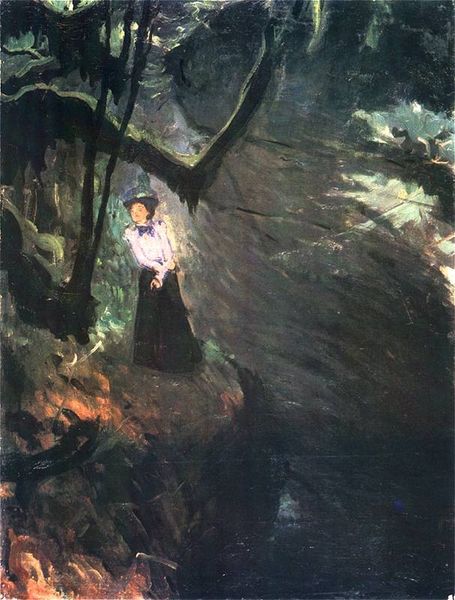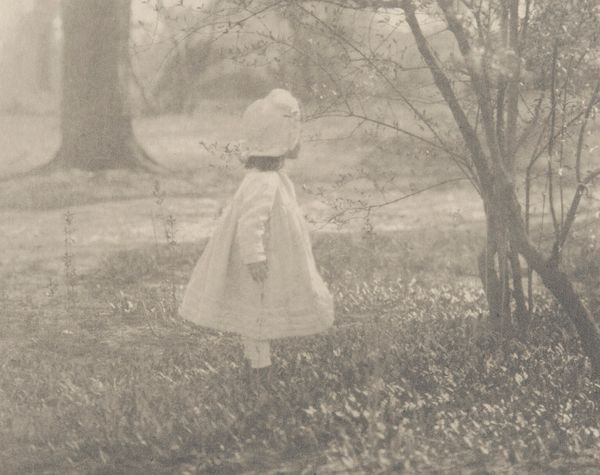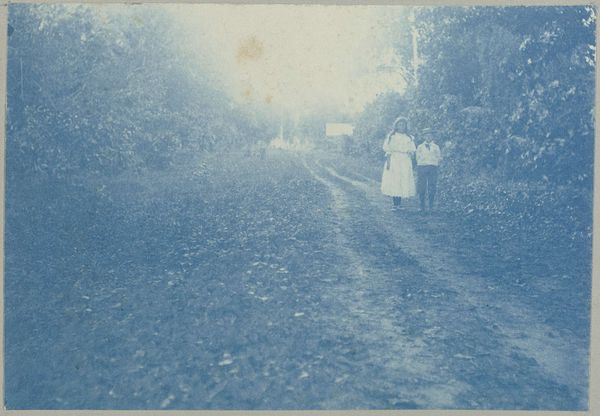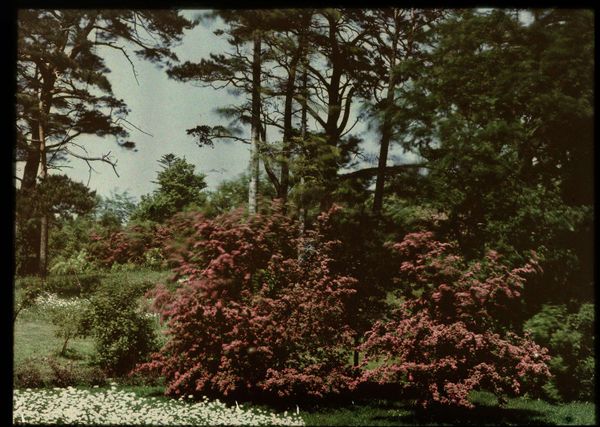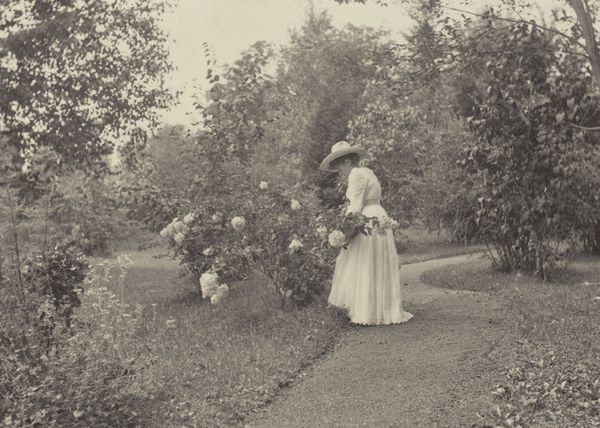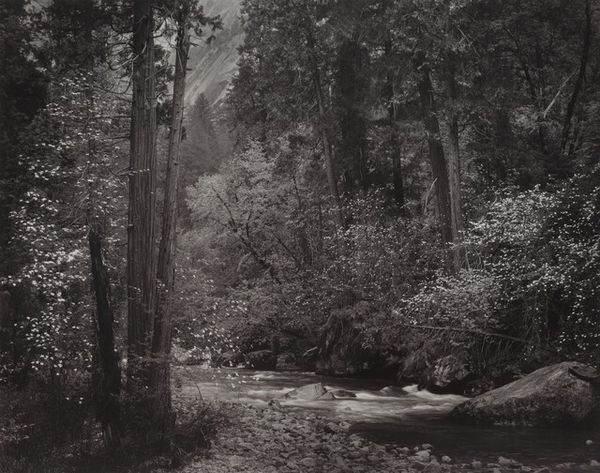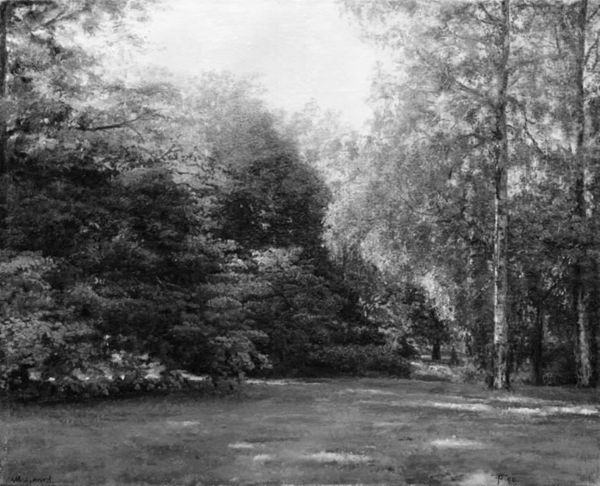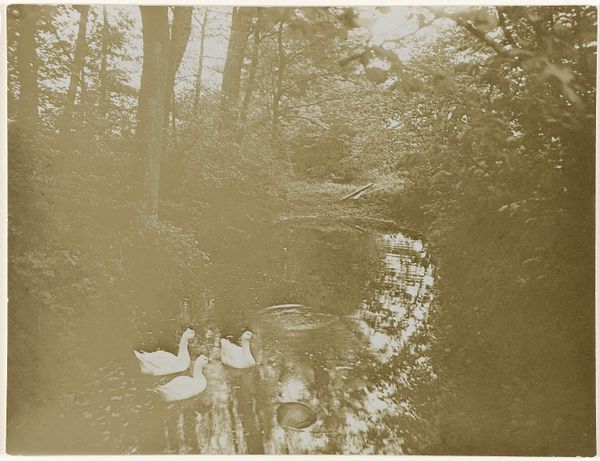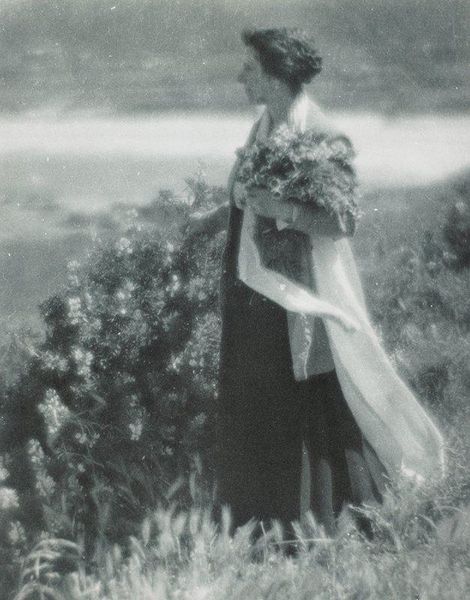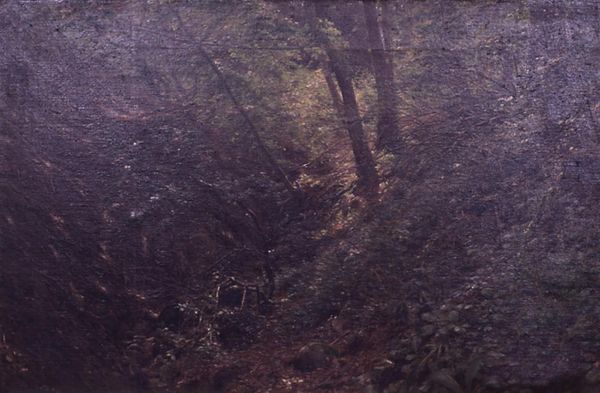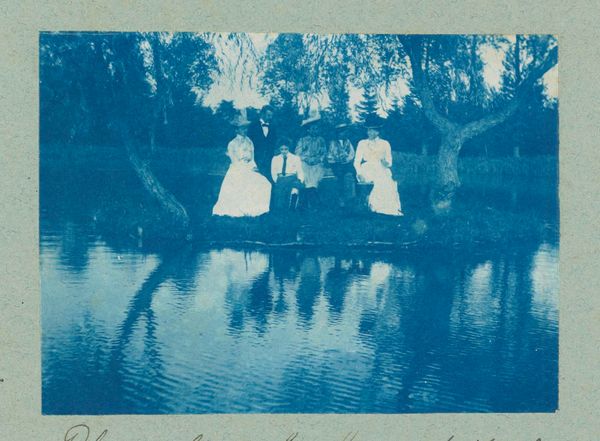
Dimensions: 38 x 61 cm
Copyright: Public domain
Editor: This is "Bridge in Abramtsevo" painted by Ilya Repin in 1879. It depicts a woman in a white dress crossing a simple wooden bridge. I’m immediately struck by the interplay between the carefully rendered figure and the looser brushwork used to describe the surrounding foliage. What do you see in this piece from a formal perspective? Curator: The first thing I observe is how Repin uses the bridge itself as a strong diagonal compositional element. This directs our gaze into the picture plane, creating a sense of depth and inviting us to follow the figure’s journey. Notice how the muted tones of the bridge contrast with the verdant greens of the forest. It seems the overall harmony hinges on tonal variety. How do you interpret that contrast? Editor: I think that tonal harmony makes the figure the most important and prominent compositional element in the painting. This also makes it interesting because there is still ambiguity regarding her background. Curator: Precisely! Repin seems to be exploring a formal balance between representational accuracy—note the details in the woman's clothing—and impressionistic freedom in the landscape. Semiotically, we could argue that the bridge operates as a symbol, a liminal space. How would you say it interacts with the implied narrative? Editor: That’s a really interesting point! I guess the bridge implies a transition, a crossing from one state to another, but her contemplative posture keeps it as ambiguous. I learned a lot about the formalist approach to this artwork and found new perspectives! Curator: And I too, the importance of subjective meaning!
Comments
No comments
Be the first to comment and join the conversation on the ultimate creative platform.
